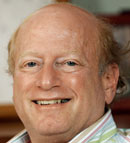Monthly Archives: January 2014
Jan 31, 2014 Christopher SchmidtLegal History
Ajay Mehrotra’s new book, Making the Modern American Fiscal State, describes how the United States in the late nineteenth and early twentieth centuries transformed the way it taxed its citizens and thereby laid the foundation for new forms of governance and new sensibilities about the network of civic obligations that bound the nation together. This is a truly impressive work of legal historical scholarship—thoroughly researched, well written, and powerfully argued. Mehrotra also offers a masterful demonstration of scholarly synthesis, artfully weaving together an intricate tapestry of economics, politics, law, and social history.
At the heart of Making the Modern American Fiscal State is a revolution in American tax practices. Prior to the twentieth century, the national government raised revenue through a system of import duties and regressive excise taxes that were “indirect, hidden, disaggregated, and partisan.” (P. 6.) By the end of the story, in the wake of World War I and on the cusp of the New Deal, a much different taxing regime was in place. It was a progressive system that was “direct, transparent, centralized, and professionally administered.” (P. 6.) While prior forms of taxation drew on a premise of a quid pro quo exchange between citizen and government—citizens put money into the system and received certain benefits in return—the new form of taxation challenged this atomistic “benefits” theory and emphasized instead a thicker sense of national community and responsibility. Taxes were assessed on a principle of one’s “ability to pay.” This approach, Mehrotra explains, “promoted an active role for the positive state in the reallocation of fiscal burdens, the reconfiguration of civil identity, and the rise of administrative authority.” (P. 10.) The rise of the modern fiscal state, built on this transformation in taxing policy was, in Mehrotra’s account, a radical change in policy with lasting effects on American statecraft and society. Continue reading "How Tax Law Made America Modern"
Jan 29, 2014 W.A. EdmundsonJurisprudence
The moral arc of the universe is long. But how long is it? If we measure from the civilizations of ancient Greece and Rome, it is long enough to bring into the fully human fold whole categories that had once been denied equal moral status: notably slaves, women, and people of color, who had sometimes been regarded as hardly more significant, morally and legally, than (non-human) animals. It may be an exaggeration to say that Roman law adhered to a rigid, exhaustive and mutually exclusive bifurcation between rights-holding persons and non-rights-holding things, but the eminent Kant scholar Christine Korsgaard does not deny that Kant was “consciously following” precisely that view (P. 630, emphasis original). In this superb paper, she takes up the task of showing that Kant’s thought contains elements that undermine what she calls “the legal bifurcation” (P. 629) of the world into persons, on one hand, and things, on the other. That task is instrumental to her aim of showing that Kant might consistently have adopted a more respectful view of the moral status of animals, and that the framework of Kant’s thought indicates an attractive way of understanding what that third status—of neither person nor mere thing—might be.
Working within Kant’s general account of rationality, agency, and personhood, Korsgaard proposes that we recognize a third category of morally significant being: that of creatures who are not mere things, and yet are not persons either. The tantalizing suggestion is that at least some animals populate this third category, and that they are not apt objects of ownership, at least not in the usual sense. This of course is contrary to Kant’s statement in Anthropology from a Pragmatic Point of View: Continue reading "Animals, Rights, and Legal “Bifurcation” In Kant"
Jan 28, 2014 Dotan OliarIntellectual Property Law
Joel Waldfogel, Copyright Protection, Technological Change, and the Quality of New Products: Evidence from Recorded Music Since Napster, 55 J.L. & Econ. 715 (2012), available at the University of Minnesota.
The constitution empowers Congress to promote the useful and the expressive arts, which Congress does through the laws governing patents and copyrights. But, promoting one may sometimes retard the other. This happens in the context of new technologies of copying and dissemination, such as the photocopier, VTR, the MP3 player, and file-sharing networks. Imposing copyright liability on the makers and users of these technologies encourages copyright owners but may discourage innovators. Shielding such makers and users from liability encourages technological innovation but may retard expressive creativity. How should we strike this trade-off, either in general or in particular cases?
This question has long been a major issue in copyright law and scholarship. To know what the right policy is, we should have some sense of the degree to which incentives to create content are diminished, if at all, in the face of the new technology. Indeed, much empirical work surrounding the file-sharing litigation has studied the effect file-sharing had on music sales. This body of literature contains diverse views, and the debate on the empirics is sometimes as heated as the one on the theory and policy side. Continue reading "Quantifying the Copyright-Innovation Interference"
Jan 27, 2014 Saule T. OmarovaCorporate Law
Peter Conti-Brown, The Institutions of Federal Reserve Independence, Rock Center for Corp. Governance at Stanford Univ. Working Paper No. 139 (2014), available at SSRN.
Exactly one hundred years after its birth, the Federal Reserve remains one of the most powerful and mysterious institutions in the world. The recent global financial crisis made it exceedingly clear how much the Fed can do – and, in fact, does do – to shore up failing financial markets and prevent the entire economic system from collapsing. That same display of strength under fire, however, exposed the darker side of Fed power: what if it’s abused or misused in ways that can hurt all of us? Both revered and feared for its apparent ability to pull at the hidden strings that keep the national (and even global) economy going, the Fed has emerged from the latest crisis with an expanded regulatory mandate and an even greater political visibility. Some applaud this development, while others criticize it. Yet, despite all of our post-crisis wisdom and divided opinions, how well do we know the Fed? Do we actually understand the sources and nature of the Fed’s century-old “magic”?
If you hesitate at all before giving an affirmative answer, you should read Peter Conti-Brown’s recent article, The Institutions of Federal Reserve Independence, a brand new draft of which is currently available on SSRN. This piece is an opening move in Conti-Brown’s larger project – a book entitled The Structure of Federal Reserve Independence (Princeton University Press, forthcoming 2015). The book promises to offer a comprehensive and historically-grounded analysis of the Fed’s “independence,” that critical ingredient of its powerful magic. To Conti-Brown, however, the Fed’s independence is much more than a dry legal concept – it is a complex real-life phenomenon, a unique “ecosystem” continuously evolving through interactions among multiple legal, political, administrative, ideological, and even cultural factors. From his perspective, it doesn’t make sense to speak of the central bank’s “independence” as a static formal attribute that means the same thing in every context. Instead, the task is to understand the key mechanisms, both formal and informal, through which the Fed exercises its independence vis-à-vis specific parties, or audiences. Continue reading "Demystifying the Fed"
Jan 24, 2014 Kerry AbramsFamily Law
What comes to mind when you hear the term “au pair”? If you’re like me, you may imagine a young adult from an upper-middle class family going abroad for a year to help care for another family’s children—a kind of student exchange program with some child care duties included as part of the bargain. But as Janie A. Chuang shows in her recent article, The U.S. Au Pair Program: Labor Exploitation and the Myth of Cultural Exchange, the au pair program that the U.S. government currently offers is not uncommonly a site of disturbing and exploitative labor practices that look much more like an abusive guest worker program than a cultural exchange. In fact, according to Chuang, the framing of the au pair program as a cultural exchange may actually contribute to the vulnerability of its foreign participants.
As Chuang notes in her article, the au pair concept was initially one of cultural exchange: au pair is a French term meaning “on par with,” and refers to “a European practice of having a young person come to a foreign country to learn the language and experience the culture through immersion in the home life of a host family while assisting with childcare and light housework.” Under the U.S. program, au pairs must be between the ages of 18 and 26. For one to two years, they live with “host families” and provide childcare in exchange for room, board, and a small stipend. Despite the labor provided by au pairs, however, the program is not run under the auspices of the Department of Labor, as are other employment-based visa programs. Instead, they are run under the State Department’s J-1 Exchange Visitor Program, a program that facilitates cultural exchange by providing temporary visits by people such as camp counselors, interns, and academic researchers. Categorizing the work as involving cultural exchange rather than labor allows employers to bypass the step of showing that they could not find a qualified American worker to perform the job. Continue reading "Labor Protection Parity for Au Pairs"
Jan 22, 2014 Davina CooperEquality
In their engaging, highly readable article, Jon Binnie and Christian Klesse explore the effects of intergenerationality within Polish transnational sexual solidarity movements. Specifically, the authors examine how chronological age and people’s histories and trajectories of political activism shape the interactions taking place between lesbian and gay activists from Poland and those from Western Europe.
The authors locate their discussion within queer conversations about time and futurity. According to Lee Edelman, whose blistering critique of heterosexual reproductive futurity proved very popular within certain quarters of queer studies, “The image of the Child invariably shapes the logic within which the political itself must be thought”; there is only one position to take when it comes to the Child and that is to be “for” it. Edelman argues instead for an “unthinkable” politics that refuses to be oriented to the future and its beneficiaries. But this is not the position Binnie and Klesse adopt. Rejecting Edelman’s account of queer, the authors draw instead on José Esteban Muñoz’s argument of queer time, where “Queerness is a structuring and educated mode of desiring that allows us to see and feel beyond . . . the present.” Thus, the authors indicate the possibility of a “queer child” as one who stands in for, and gestures to, a different future—where sexual diversity is a regular and accepted dimension of social life. Continue reading "Generations of Activism and Queer Time"
Jan 21, 2014 Mary CrossleyHealth Law
As New York City Mayor Michael Bloomberg left office, commentary on his public health initiatives abounded; the reviews ranged from lauding him as an innovative pioneer to painting him as a meddling nanny-in-chief. At the core of these contrasting views lies a sharp divergence in how commentators understand the scope of the state’s proper interest in protecting its citizens from today’s primary threats to their health, threats posed by chronic and non-communicable conditions such as obesity, diabetes, heart disease, and cancer. Does the state’s interest in protecting public health—and thus its police power to advance that interest—extend to combating such conditions’ growing prevalence? Or is the state’s public health authority limited to addressing health threats like those that historically have occupied public health officials, threats like communicable diseases, tainted food, and unsafe water? In short, what makes health threats “public”?
Lindsay Wiley’s article “Rethinking the New Public Health” reconsiders this debate and suggests a novel approach to finding a middle path between the public health expansionists (who view any problem diminishing the health and longevity of a significant number of people as a public health problem subject to regulatory intervention) and the public health minimalists (who would confine the state’s regulatory authority to addressing those collective threats against which responsible individuals cannot protect themselves). By identifying and analyzing a common strand of thought in public health and public nuisance law, Wiley provides a theoretical basis for identifying those “public bads” that are properly targets of public health interventions. Wiley would define those “public bads” as having not only economic, but also epidemiological meaning. Continue reading "What Makes Health “Public”? Finding a Middle Path"
Jan 20, 2014 Aya GruberCriminal Law
For decades, I have felt quite Janus-faced about gender crime laws. My feminist face cringes at the thought of widespread sexual and nonsexual violence against women occurring with utter impunity. My anti-authoritarian face furrows in consternation at reports of mass incarceration, prison abuses, and authoritarian police and prosecuting norms. This personal philosophical dissonance has led me on a quest to figure out whether the United States’s penal system holds any liberatory potential for women, and, if not, what can be done about violent gender subordination. In this vein, I have sought out scholarship that neither repeats the battered women advocates’ mantra that there should be “zero tolerance” for gender crime, nor holds to liberal ideals that instinctively prioritize “neutral” (defendants’) rights. This led me to Leigh Goodmark’s complex, insightful, and no doubt controversial book, A Troubled Marriage: Domestic Violence and the Legal System. The book is meticulous in its research, spanning decades of historical developments in the law of intimate abuse. It brings together many strains of feminist and criminal law theory to formulate a comprehensive re-envisioning of the domestic violence law reform project.
The book consists of two main interventions―a theoretical intervention and a practical intervention. Theoretically, the book critiques “dominance feminism,” a brand of feminist legal theory developed primarily by Catharine MacKinnon, for steering the anti-abuse movement in a prosecutorial direction. While MacKinnon’s writings have far less to do with domestic violence than with rape, pornography, and sexual harassment, the book makes a compelling case that dominance feminism-type ideas were highly influential in the domestic violence arena. Practically, the book calls for “antiessentialist” domestic violence law and policy, meaning that domestic violence reform must be disentangled from popular reductionist characterizations of battered women as non-poor white women subject to brutal violence, who have tried unsuccessfully to separate in the past, and desire batterers’ incarceration but are too afraid to pursue prosecution. For Goodmark, rejecting essentialist images necessitates rejection of most state punitive responses to intimate abuse. The book accordingly advocates reforms “outside the criminal law,” such as truth commissions, batterer inventions, and even microfinance. Continue reading "Rethinking Domestic Violence, Rethinking Violence"
Jan 17, 2014 Linda MullenixCourts Law
As some may remember, Dallas attorney Fred Baron created an uproar in the legal community in 1993 when he mounted a full-bore attack against the infamous Georgine nationwide asbestos settlement class. In 1997, Laurence Tribe — arguing an array of substantive and procedural objections — ultimately convinced the Supreme Court in Amchem v. Windsor to disapprove that settlement. Fred Baron, then, largely was responsible for helping to establish that settlement classes are legitimate, but that they must include structural assurances of due process fairness to absent class members.
Less well-known and long-forgotten in Amchem’s wake, Baron also lobbed an array of ethical objections at the settling parties, although the Supreme Court ultimately deflected these challenges. The Georgine settling parties had simultaneously presented the federal district court with a class complaint and a settlement. Baron raised the question of the duties that plaintiffs’ attorneys owed to class members in the absence of a formal class certification at the outset of the litigation. On this, he held two somewhat discordant views. On one hand, he opined that absent a formal class certification at the front-end of class litigation, no class was created and therefore the plaintiffs’ attorneys could not negotiate a settlement on behalf of the class. There was no attorney-client relationship until the class came into existence. Thus, he argued, the entire Georgine settlement was illegitimate and the class could not be bound by a back-end class certification. On the other hand, he argued that an attorney-client relationship existed throughout and class counsel owed fiduciary duties to the class members, even without a filed class complaint. In this regard, class counsel had violated their fiduciary duties to the Georgine class. Continue reading "Front-End Duties to the Class"
Jan 16, 2014 Mark TushnetConstitutional Law
Every once in a while you read an article that makes you smack your head and say, “Duh—this is so obvious (and obviously right)—that I can’t understand why I didn’t see it before.” That’s the mark of a terrific article. It says something that is obvious after you’ve read it, but that wasn’t at all obvious (to you, at least) before. Deborah Hellman’s article on the Supreme Court’s treatment of “avoiding corruption” as a justification for campaign finance regulation is terrific in that way.
According to the Court, the First Amendment limits the kinds of corruption that can be targeted by campaign finance regulation. Only quid pro quo corruption—the more or less direct exchange of money given to a candidate for the candidate’s vote or other action on a matter of interest to the donor—counts for First Amendment purposes. Professor Hellman points out that “corruption” is what she calls a “derivative concept.” That is, you can’t say that some activity “corrupts” an institution’s proper operation without specifying beforehand what that proper operation should be. After developing that point with examples from universities (nepotism is bad in hiring faculty members because academic departments are supposed to make decisions based on academic criteria, but preferential admission to selective public schools for siblings of a student already enrolled there might be permissible because of their overall goals), she turns to politics. Continue reading "Corruption, Partisan Gerrymandering, Theories of Democracy, and the Supreme Court"















